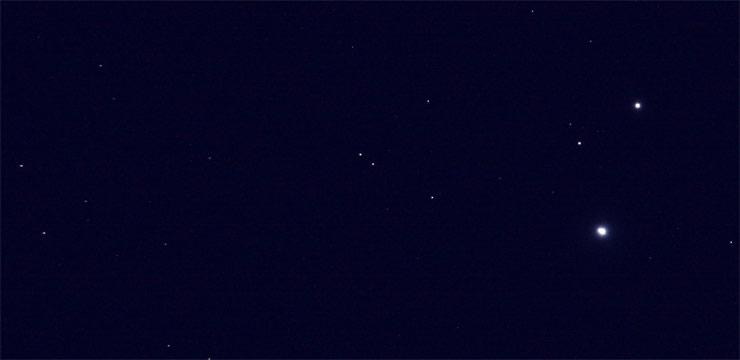
Mizar, The First Double Star
May 2009 :
It was my high school friend Ray Gerbi who introduced me to backyard astronomy. On a late summer evening in 1963 (yes, I am that old!), he plunked a Gilbert reflecting telescope on an open area in his back yard and proceeded to show me Saturn and a pair of fuzzy blobs of light (M13 and M31). But the highlight of the evening, an event that would give direction to my pursuits in amateur astronomy, came when Ray showed me the double star Mizar. I was totally mesmerized by the sight of two sparkling white stars shining side-by-side. For years afterward, double stars would be my favorite deep-sky objects.
The middle star in the handle of the Big Dipper, Mizar is the easiest double star for the novice to locate. It boasts historical importance as the first double star discovered. Until a few decades ago, credit for the discovery went to the Jesuit astronomer Jean Baptiste Riccioli, who reported the star’s duplicity around 1650. But a recent investigation of Galileo’s notebook reveals that a former student of his, Benedetto Castelli, saw Mizar several decades earlier.
If you study Mizar carefully with the unaided eye, you’ll see a fainter star close by. This is Alcor, Mizar’s 4th magnitude optical companion. The two appear at opposite sides of a low-power telescopic field. Look closely at Mizar. This 2nd magnitude star is attended by another 4th magnitude companion just 14 arc-seconds away. The pair lies about 80 light-years from Earth.
May brings us Astronomy Day and the opportunity to introduce backyard astronomy to the general public. If you decide to become involved in a public star party, be a Ray Gerbi and introduce your guests to Mizar. You might just inspire a future double star aficionado.
Your comments on this column are welcome. E-mail me at gchaple@hotmail.com.



